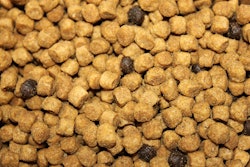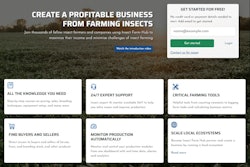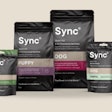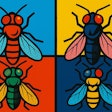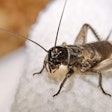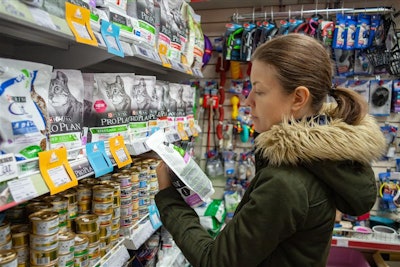
As the pet food industry seeks sustainable alternatives to traditional animal-based proteins, insect protein is gaining ground — but consumer education will be critical for widespread adoption. That’s the message from Dr. Lonnie Hobbs, assistant professor at Kansas State University’s Department of Agricultural Economics, who recently presented new research on U.S. dog owners’ perceptions and willingness to pay for insect-based pet food.
“Insect proteins have been shown to be sustainable, high in protein, and low in fat,” Hobbs said. “But as we know in business, what separates a good idea from a great idea is: are customers willing to buy?”
To explore that question, Hobbs and co-author Dr. Aleksan Shanoyan surveyed 763 U.S. dog owners through a choice-based experiment designed to evaluate respondents’ knowledge, perceptions and willingness to pay for insect-based pet food compared to animal- and plant-based products. Dr. Hobbs presented his findings during his session, Insect protein in pet food: Assessing consumer perceptions, knowledge and willingness to pay, at Petfood Forum 2025 in Kansas City, Missouri, U.S.
Knowledge gaps highlight opportunity
The survey revealed that while pet owners are relatively informed about insect protein’s nutritional content — such as its high protein and low fat — fewer understood potential health benefits like hypoallergenic properties and immune support.
“Given the importance of health and wellness in the pet food market, this shows a clear opportunity to increase consumer knowledge about the health aspects of insect proteins,” Hobbs said.
Perceptions show promise — and confusion
Participants cited “high protein,” “healthy,” and “natural” as positive traits associated with insect protein. Common negative perceptions, however, included “dog dislikes it,” “cheap meat replacement,” and “less nutritious than meat.” Notably, many respondents selected “I don’t know” when asked about both positive and negative aspects, underscoring the need for better consumer education.
“There’s a significant gap in consumer knowledge that’s influencing perceptions,” Hobbs said. “This provides an opportunity for pet food companies to shape the narrative through education.”
Willingness to pay varies by segment
Willingness to pay (WTP) data revealed important segmentation among U.S. dog owners. Overall, consumers were willing to pay more for animal- and plant-based proteins than insect-based options. But among those already open to or currently buying insect-based pet food, the trend flipped.
“For consumers open to insect protein, they were willing to pay about $2.70 more for an 18-pound bag of insect-based dog food compared to plant-based,” Hobbs said.
Millennials and Gen X respondents — key target demographics — also showed a higher WTP for insect protein, likely tied to both disposable income and access to educational resources via social media and other digital platforms.
Next steps for the industry
“This research gives the pet food industry a baseline to build from,” Hobbs said. “Future work will model how consumer values, like prioritizing health versus price, impact their willingness to pay, and test educational interventions to improve perceptions.”
The study also underscores the importance of omnichannel strategies to reach pet owners with accurate, science-based information.
“By increasing knowledge of insect-based proteins’ benefits, pet food brands can increase consumer acceptance and open up new market potential,” Hobbs concluded.



